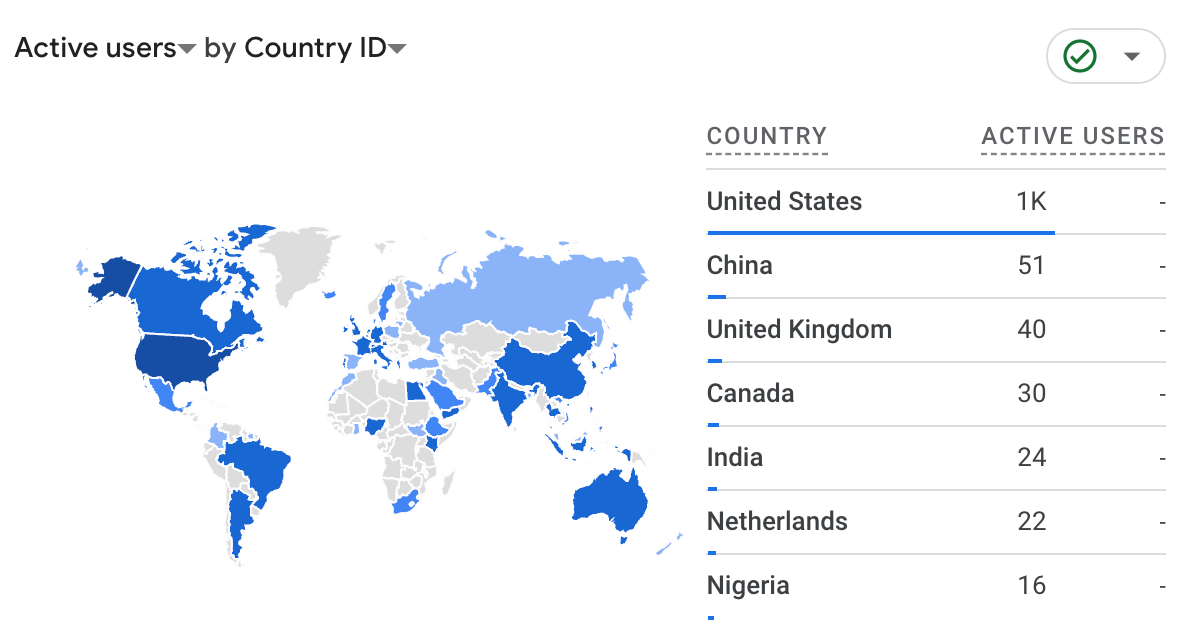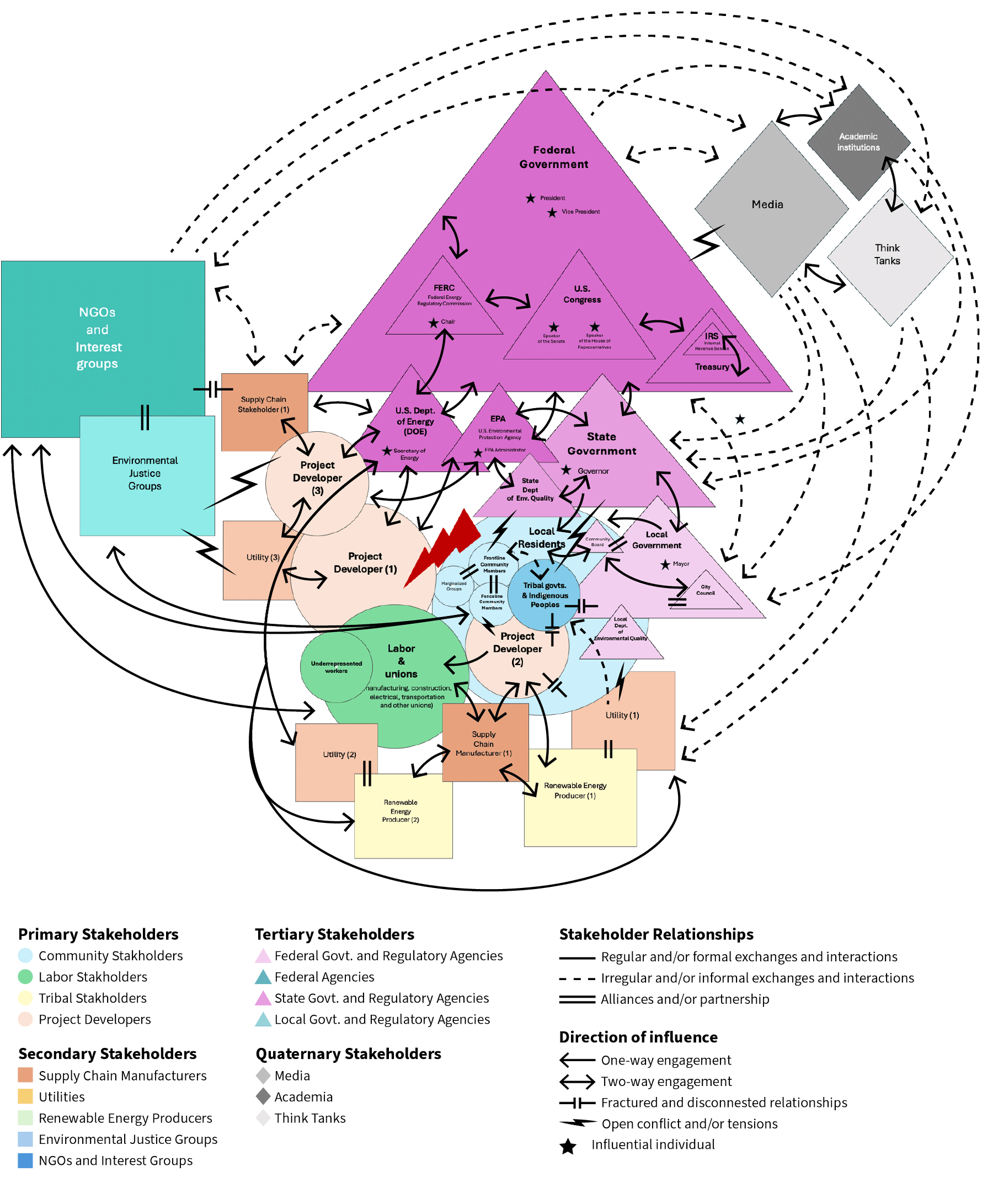
S.A.M. Tool: Learnings from the beta launch of RMI’s stakeholder analysis and mapping tool
Simplifying stakeholder management, one project at a time.
The road to F.I.D. (final investment decision) can be rocky.
Reaching F.I.D. is a significant milestone in a project’s lifecycle, when key decisionmakers and investors greenlight the project’s long-term feasibility, viability, and expected returns. It also involves developers’ successfully navigating complex permitting and siting processes.
In 2024 alone, over $270 billion was invested in clean energy, decarbonization, and domestic manufacturing facilities in the United States. Globally, clean energy transition investments exceeded $2 trillion.
The Mission Possible Partnership’s (MPP) Global Project Tracker follows a growing pipeline of nearly 700 projects across high-emitting sectors such as aluminum, aviation, cement & concrete, steel, and shipping. However, to date less than 20 percent of these projects have secured F.I.D. to be able to kick-off construction.
Permitting delays and denials can jeopardize F.I.D. by racking up developers’ costs that can result in project cancelations.
A recent national survey of clean energy projects found that one of the main reasons for these delays and denials is the lack of community support and buy-in during the siting and permitting process.
One effective solution is to proactively identify, analyze and engage key stakeholders to inform siting decisions and derisk permitting processes that require community buy-in.
Yet until now, the options for effective stakeholder management have been limited.
Traditional stakeholder analysis and mapping options (think spreadsheets or Venn diagrams) can be time-consuming, tedious and limited in functionality. Commercially available tools aren’t tailored for analyzing and mapping the typical stakeholders in energy project landscapes.
This was a common thread in consultations and conversations with project developers, policymakers, financiers, technical experts, academics, and labor and community leaders engaged in clean energy and infrastructure projects around the country, and the world.
What if there was a way to make stakeholder analysis and mapping easy, intuitive and digital, and tailor it to the specific needs of energy and infrastructure projects?
Enter S.A.M. – short for stakeholder analysis and mapping – a digital tool that can create clear visualizations of all kinds of stakeholder landscapes.
Since its beta launch in August 2024, RMI’s first-of-its-kind stakeholder analysis and mapping tool has attracted over 1,300 users in more than 10 countries and five continents.
Exhibit 1: S.A.M. Tool (beta) users by country

The versatile stakeholder management tool has wide appeal to a broad range of decision makers and stakeholders, including developers, policymakers, regulators, financiers, regulators, technical experts, labor and workforce organizations, educational institutions and NGOs, with interdisciplinary applications from energy and policy, to finance and urban planning.
S.A.M.’s official launch had been eagerly awaited since the initial sneak-peek at the tool in-development during the launch event of RMI’s flagship report on US Hydrogen Hubs, “Delivering Equitable and Meaningful Community Benefits via Clean Hydrogen Hubs,” in February 2024.
Why S.A.M. ?
S.A.M. is a digital stakeholder analysis and mapping tool for creating simple and digestible visuals of the interrelationships between all types of stakeholders, with a broad range of applications across energy, finance, policymaking, public health, academia and non-profit sectors.
S.A.M. fills the gap where traditional manual, time-consuming (and often tedious!) options for stakeholder analysis and mapping are limited in functionality and outputs. For example, commercial tools are not tailored to analyze or map the unique types of stakeholders common in energy and infrastructure projects (e.g., offtakers, utilities, regulators, communities etc.), and standard spreadsheets with hundreds of rows and columns are often very cumbersome and complicated to update in real-time across multiple categories of stakeholders.
Thus, in the Fall of 2024, we launched S.A.M. Tool’s beta version.
S.A.M. simplifies the stakeholder mapping process by offering built-in, preset options for selecting categories of stakeholders (pre-set as primary, secondary, tertiary, or quaternary types as defined by the author of the tool), as well as write-in options for unique stakeholders. The tool allows users to allocate relationship types based on their own desk and field research, and understanding of the historical and local context underlying stakeholder relationships.
Through a streamlined interface, S.A.M. simplifies the process of creating easily digestible, at-a-glance visualizations of complex stakeholder relationships and localized power dynamics for projects in all sectors, communities, and regions.
What is stakeholder mapping?
Stakeholder mapping can be an individual activity or conducted with a team/group via a three-step process:
- Identifying all (relevant)* stakeholders in a project’s landscape;
- Researching and analyzing the historical to present-day context of the relative power (or lack thereof) possessed by each stakeholder to understand whether they are “high,” “medium,” or “lower” power in the context of the project (and their ability to influence outcomes); and
- Assessing how each stakeholder relates to other stakeholders in the landscape based on the historical and/or present-day context, whether that engagement is one-way or two-way, frequent or intermittent, and has the characteristics of an alliance or active conflict (i.e., notating the “type of relationship”).
The end result of any stakeholder mapping exercise is typically a “map,” that enables a visualization of the full landscape of stakeholders (or “key players”) in a project’s or community’s ecosystem. For example, a traditional manually drawn stakeholder map of a hypothetical clean energy project could look like this:

*Relevance is a subjective determination. However, for all types of energy or infrastructure projects, residents and labor groups that are or may be impacted by the project, now or in the future, would be considered relevant stakeholders.
Why is stakeholder analysis and mapping important?
Given that lack of community support, or outright opposition, has been found to be one of the top three causes of project delays and cancelations for clean energy projects, understanding the history and background of local communities is a critical element in site selection. Gaining insights into locals’ lived experiences, needs and aspirations for their communities helps highlight opportunities for co-creating a shared vision for socio-economic growth and prosperity.
By engaging in two-way dialogues with those on the ground, especially those who are likely to be affected by a potential project, developers can learn about concerns and objections early on in the process, and well before beginning a time-consuming and expensive permitting process. Identifying and understanding the interrelationships among a diverse spectrum of local stakeholders helps decisionmakers anticipate and deliver effective approaches for outreach and engagement.
Consulting local stakeholders for their feedback and perspectives is an important input across all stages of project management, from design to decommissioning. In addition to mitigating the risk of expensive and time-consuming delays during permitting processes, active outreach and meaningful engagements can facilitate better outcomes for developers and host communities.
How does the S.A.M. Tool work?
For step-by-step guidance on how to use S.A.M. for stakeholder analysis and mapping, visit the instructions page and “FAQs about the S.A.M. Tool.”
S.A.M. tool demos and user feedback
In addition to a digital launch campaign to promote S.A.M.’s beta version via social media, the bespoke stakeholder management tool was formally debuted during RMI’s Tools for the Energy Transition: Project Development Resources for Heavy Industry webinar in October 2024.
Feedback on functionality, usability and additional features for S.A.M. 2.0 was collected through conference presentations, capacity-building workshops, and 1:1 demonstrations and Q&A sessions with a range of users and audiences:
project developers of clean energy and infrastructure projects, technical experts at national labs and academic institutions, local, state, and federal policymakers, community organizations, and NGOs (as summarized in the table below):
| Forum | # |
|---|---|
| Panels and presentations at clean energy and technical conferences | 10 |
| 1:1 feedback | 5+ |
| On-demand demonstrations for technical experts (policymakers, national labs) | 5 |
| Webinars | 2 |
| Workshops | 2 |
Recurring themes from user feedback included:
- enhanced functionality to enable one-step upload of stakeholders (via a digital form);
- additional functionality to enable searchability of stakeholders by type and location (for all 50 states);
- user accounts to enable saving data, stakeholder analysis and maps; and
- a “dashboard” or “tally” of the types of interrelationships (one-way, two-way, alliances, conflicts etc.) for at-a-glance summation of the “health” of the ecosystem.
Interdisciplinary and cross-sectoral applications
Beyond the ability to input, analyze and map interrelationships in complex clean energy and infrastructure project landscapes, S.A.M. can be used for a wide range of interdisciplinary applications including grid planning & electricity markets, visualizing supply chains and offtakers in local, regional and global contexts, managing evolving partnership networks with public, private, and civil society stakeholders, and academic applications to analyze a variety of key stakeholders in the fields of finance, energy, public health, sustainability, international relations, conflict resolution, political science, public administration, and urban planning.
What’s next: S.A.M. 2.0
User feedback has identified several enhanced features and capabilities for S.A.M. 2.0 that would facilitate further efficiencies in stakeholder management. RMI is keen to collaborate and partner with interested organizations and institutions to continually enhance the capabilities and expand the applications of the S.A.M. Tool.
To learn more or express interest in collaborating, please reach out to Hadia Sheerazi, Manager in the Climate-Aligned Industries Program: hadia.sheerazi@rmi.org.
Thank you to the Bezos Earth Fund (Earth Fund), Mission Possible Partnership (MPP) and Breakthrough Energy (BE) for supporting RMI’s mission. Their partnership was instrumental in the development and publication of the S.A.M. (Stakeholder Analysis and Mapping) Tool as part of our 2024 report, “Delivering Equitable and Meaningful Community Benefits via Clean Hydrogen Hubs.”